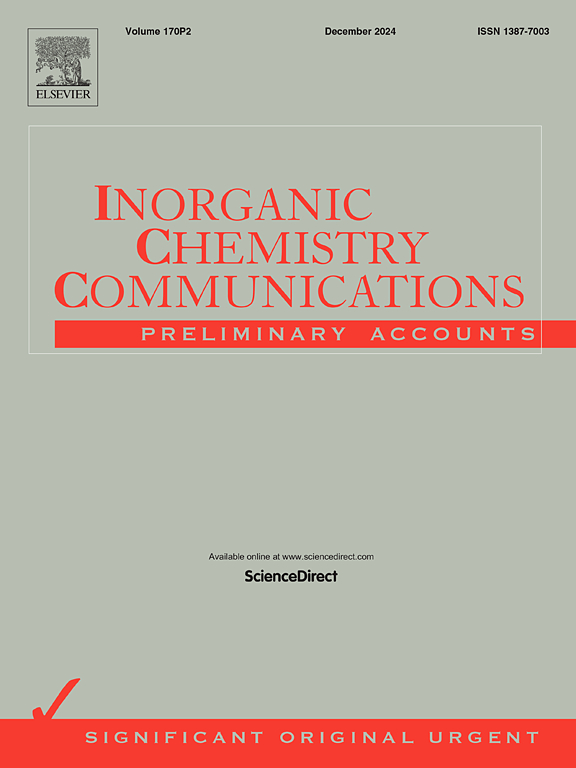A rod structure by oxidative activation potency: An applicable method in hexavalent chromium detection
IF 4.4
3区 化学
Q1 CHEMISTRY, INORGANIC & NUCLEAR
引用次数: 0
Abstract
Evaluation of hexavalent chromium in air samples is one of the important challenges of occupational and environmental health experts. In this study, a zinc oxide rod nanocomposite (ZnR/nC) with quasi-oxidative properties was used in development of colorimetric method for determination of hexavalent chromium in air samples. The synthesized nanocomposite was characterized by different techniques such as Brunauer-Emmett-Teller (BET), energy dispersive X-ray spectroscopy (EDS) and scanning electron microscopy (SEM). Nanocomposite was used as a catalyst in the oxidative reaction between 3,3′,5,5′-tetramethylbenzidine (TMB) and hexavalent chromium. The physical and chemical factors affecting the process were optimized with the response surface method-central composite design. pH 3.3, 0.3 mg ZnR/nC and 5.2 mM TMB was evaluated as optimized chemical parameters. Kinetic investigations of colorimetric method were done and rate constant and maximum reaction rate were evaluated as 0.036 mM and 2.75 mM/s, respectively. Under optimal conditions, the detection limit and accuracy of the method were evaluated as 0.02 μg/L and 4.7 %, respectively. Linear dynamic range and the regression coefficient of the calibration curve were obtained as 0.1–1.5 mg/L and R2 > 0.99, respectively. The recovery percentage of hexavalent chromium in air samples was equal to 98.9 %, which indicates the good applicability of the proposed method in determination of hexavalent chromium, which is capable of competing with the standard method (NIOSH 7600).

氧化活化能的棒状结构:一种检测六价铬的适用方法
空气样品中六价铬的评价是职业和环境卫生专家面临的重要挑战之一。采用准氧化性质的氧化锌棒纳米复合材料(ZnR/nC),建立了测定空气样品中六价铬的比色法。采用brunauer - emmet - teller (BET)、能量色散x射线能谱(EDS)和扫描电子显微镜(SEM)对合成的纳米复合材料进行了表征。以纳米复合材料为催化剂,进行了3,3 ',5,5 ' -四甲基联苯胺(TMB)与六价铬的氧化反应。采用响应面法-中心复合设计对影响工艺的理化因素进行了优化。以pH 3.3、0.3 mg ZnR/nC和5.2 mM TMB为最优化学参数。采用比色法进行动力学研究,得到反应速率常数为0.036 mM,最大反应速率为2.75 mM/s。在最佳条件下,该方法的检出限为0.02 μg/L,准确度为4.7%。标定曲线的线性动态范围为0.1 ~ 1.5 mg/L,回归系数为R2 >;0.99,分别。空气样品中六价铬的回收率为98.9%,表明该方法对六价铬的测定具有良好的适用性,可与标准方法(NIOSH 7600)相竞争。
本文章由计算机程序翻译,如有差异,请以英文原文为准。
求助全文
约1分钟内获得全文
求助全文
来源期刊

Inorganic Chemistry Communications
化学-无机化学与核化学
CiteScore
5.50
自引率
7.90%
发文量
1013
审稿时长
53 days
期刊介绍:
Launched in January 1998, Inorganic Chemistry Communications is an international journal dedicated to the rapid publication of short communications in the major areas of inorganic, organometallic and supramolecular chemistry. Topics include synthetic and reaction chemistry, kinetics and mechanisms of reactions, bioinorganic chemistry, photochemistry and the use of metal and organometallic compounds in stoichiometric and catalytic synthesis or organic compounds.
 求助内容:
求助内容: 应助结果提醒方式:
应助结果提醒方式:


